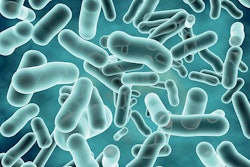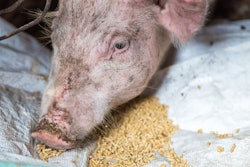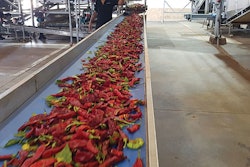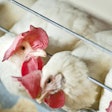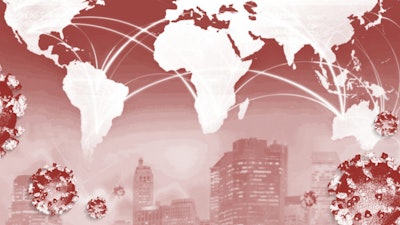
Economists predict emphasis on resilient supply chains and interest in localization, technology after COVID-19
With facilities in both Europe and China, feed manufacturer Adisseo was among the first in the industry to be impacted by COVID-19.
It wasn’t clear, at first, what was about to happen, said Frank Chmitelin, executive vice president of global sales and marketing at Adisseo. Reliable information was hard to come by, and it’s not like the world hasn’t seen outbreaks that amounted to little more than false alarms. But when China announced that it was shutting down, Chmitelin said, they realized this time was serious.
Because they are considered an essential service, Adisseo, Chmitelin said, has never had to shut down because of COVID-19, but that hasn’t exempted them from dealing with the challenges of a global pandemic.
As COVID-19 spread across the world, Adisseo rolled with the punches that followed — port closures, ingredient shortages, and shipping delays. When the virus reached Italy, Chmitelin said, many shipping companies ceased service in affected regions, forcing Adisseo and other manufactures to find new transportation on the fly. More recently, he said, the company has had trouble finding enough available containers for its shipments.
“We have faced thousands of difficulties, but we managed,” Chmitelin added.
Along the way, they’ve learned some key lessons, Chmitlen said. While Adisseo has always believed in redundancy and geographic diversification, they now plan to double down on those values. They’re also looking at more digitization and seeking more ways to maintain flexibility in their supply chains. As an industry, he said, animal feed “will not come out of this situation the same as we went into it.”
Adisseo is far from alone in this sentiment. Industry analysts and economists said that if the pandemic continues for any length of time, it could result in sizable changes to the way the feed industry, and agriculture in general, will operate in the future. They anticipate backlash against globalization and a push for localized supply chains with more redundancy and flexibility built into the process among both industry leaders and consumers. If the pandemic drags on long enough, they said, government leaders may step in to mandate such changes in a global wave of regulatory actions that could begin as early as this fall.
“It’s amazing how resilient the system has been, but we can see where the critical pinch points have been,” said Chad Hart, an associate professor of economics at Iowa State University. “We are going through a gigantic replumbing of the food supply chain. It’s an incredibly difficult balancing act, and it’s something we’re not done adjusting to yet.”
Manufacturing alternatives
Sudden shifts in demand, shipping delays and raw material shortages have plagued nearly every industry since COVID-19 began. But vitamin shortages, Chmitelin said, are by far the biggest problem specific to the feed industry.
According to Chmitelin, certain vitamins are not only produced exclusively in China, but some are only manufactured in regions of the country that have been hard-hit by COVID-19.
“There’s no other alternative for some of these vitamins,” Chmitelin said, “and that has created some issues.”
While still reliant on some of these manufacturers, Adisseo saw wisdom in regional diversification years ago and opted to maintain manufacturing capacity on two continents. Companies that haven’t already, economists said, will likely follow suit in years to come.
David Zilberman, a professor in the department of agricultural and resource economics at the University of California, Berkeley, anticipates backlash specifically against reliance on China, in addition to a general push toward localization.
“One thing is certain,” Zilberman said. “Dependence on China will decline. … Our relationship with China will never be the same.”
The actual mechanics of this decreased dependence may be more complex than a simple expansion of manufacturing capabilities, and strategies will vary by company and by product.
For example, success in specialty markets is much more reliant on economies of scale than in more widely used products, Chmitelin said. If you want to be competitive in specialty ingredients, it’s necessary to have large production facilities — perhaps 150,000 tons or greater.
“There are not so many locations in the world where you can do that,” Chmitelin said.
Rob Handfield, executive director of the Supply Chain Resource Cooperative at North Carolina State University, believes the expense associated with new specialty manufacturing may drive some companies away from specialty feed ingredients entirely.
“We’re more likely to see some domestic development if it’s something that’s really critical to feed,” he said. But if it can be replaced with another ingredient, “people may decide we need to go back to something like soybeans, which we have a surplus of in this country.”
If an ingredient can’t be replaced by something more widely available, Zilberman said, companies may opt to team up to fund new manufacturing facilities outside China in other low-cost countries such as Mexico.
container-ship-at sea-with-shore
COVID-19 exposed weakness in the supply chain. As a result, the pandemic may drive the exploration of more diverse and localized ingredient sourcing strategies. (Dan Prat | iStockPhoto.com)
High- and low-tech solutions
In the feed industry, the impact of COVID-19 has gone beyond shortages of critical ingredients. Bottlenecks in downstream supply chains have caused abrupt pivots in consumer demand, resulting in short-term declines in demand for feed and falling prices.
Downstream supply chains are backing up in two key areas: at meatpacking plants and at grocery stores, Hart said. This may result in broader, long-term changes to agricultural supply chains.
The remarkable thing about COVID-19, Hart said, is that the very things that have made animal agriculture a strong, efficient industry made it vulnerable to the consequences of a pandemic. To take advantage of economies of scale and cut out unnecessary costs associated with warehousing and inventory, the industry focused on just-in-time production and economies of scale, packing workers tightly in massive processing plants.
Now, the industry is paying for those decisions.
“If you think about the biggest issues we have now in agriculture,” Hart said, “it’s because we’ve gotten very used to — let’s call it instant gratification.”
While some of the industry fallout may result in a reversion back to smaller scale, more localized operations, Jayson Lusk, head of the agricultural economics department at Purdue University, anticipates that COVID-19 will also drive a rapid adoption of automation and other technologies in some agricultural sectors.
“I think there will be renewed efforts to invest in technologies because that’s where the concern is — the labor side of things,” he said.
While meat processors may focus on automation to reduce the risk of outbreaks among their employees, automation will also appeal to feed manufacturers. According to Chmitelin, shipping backlogs at ports and borders were often caused by the need to wait for officials to process paperwork by hand.
“Every country in the world is requesting different documentation,” he said. “If we would move forward with a more digitized way of managing those certificates, it would be extremely helpful.”
The technology to do this already exists, Chmitelin noted, but adoption to date has been slow.
Hart believes that companies at all stages of the food supply chain — be they feed producers, restaurants or grocery stores — will also exhibit a renewed interest in warehousing and inventory. Where in recent decades maintaining inventory has come to be seen as an unnecessary expense, Hart said COVID-19 has demonstrated that “having inventory is actually a good thing because it creates a cushion that can tide you by when things get out of balance.”
Survival of the resilient
While companies across all agricultural sectors have already begun to make changes to their operations, Zilberman doesn’t believe the impact of COVID-19 will be limited to tangible effects. Rather, he predicts an industry-wide shift in mindset.
For the last several decades, he said, efficiency has been the name of the game, with the companies capable of producing food at the lowest possible price coming out on top. Now, he anticipated a sort of economic evolution in with “natural selection” will result in mass bankruptcies and closures — with the most resilient, rather than the most efficient, businesses winning the day.
“If this lasts a long time,” he said, “and a lot of people are not able to maintain their cashflow, you will see a lot of bankruptcies, a lot of consolidation and a lot of new companies because there will be a vacuum.”
Because not every crisis can be anticipated, Zilberman believes the companies that will prove most resilient are those that can adapt to shifts in demand quickly and efficiently. This, he said, is going to put a premium on soft skills such as creativity and communication — skills he says have been undervalued in agriculture and the feed industry.
“Sometimes, what you do is not produce something that is new,” he said. “You develop a capacity to sell it in a different way.”
Take restaurants, for example, Zilberman said. Many have failed and others will continue to close due to restrictions on dine-in sales. Those that already had take-out or quickly developed the capacity to process orders remotely are thriving.
The feed industry may not pivot to direct consumer sales the way restaurants and grocery stores have, but they will still need to learn to prioritize resilience if they want to survive.
How many businesses COVID-19 claims will depend on how long the crisis lasts, Zilberman said. If it goes on long enough and results in increased food insecurity, he and others believe the government will begin to step in to mandate resilient supply chains in agriculture.
“My feeling is there will be a lot of demand to deal with some of these situations in government,” Zilberman said. “There will be political pressure. On one hand, the consumer and some activists will try to look at government managing agriculture. On the other, companies will say we’re losing money and need to be compensated.”
Each nation will likely take a different approach informed by how COVID-19 played out on the local stage, Zilberman said. The impact in countries where COVID-19 resulted in minimal impact on food security may see minimal changes. Other countries may consider national stockpiles of key food items for the first time, or may even require agribusiness to take action to ensure food security in times of crisis — the European Union has already indicated it plans to integrate the lessons of COVID-19 in the Farm to Fork subsection of its Green Deal reforms.
In the U.S., the extent of the reforms will depend on the severity of food shortages and how high prices rise at the consumer level, Handfield predicted. “I think we’re definitely going to see some level of increased scrutiny,” he said. “I think people are really worried about it now, for the first time, so I think we’ll see congressional action to make sure we have a food supply that is safe and secure.”
“That could mean a new farm bill” or other reforms, he said.


